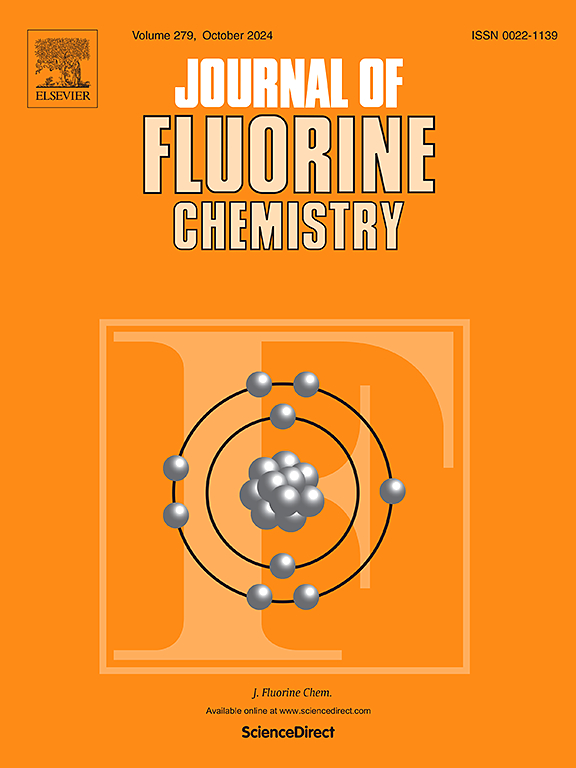Highly diversified fluorinated chromane-thiadiazol-saturated cyclic amine hybrids: Design, synthesis, single crystal XRD and MCF-7 Cell-line Study
IF 1.9
4区 化学
Q3 CHEMISTRY, INORGANIC & NUCLEAR
引用次数: 0
Abstract
The current study focuses on the synthesis and characterization of novel fluorinated chromane derivatives, aiming to explore their structural and biological potential. The molecular framework integrates fluorine for enhanced physicochemical properties, employing nucleophilic substitution and cyclization strategies. The synthesized derivatives (4a–4j) were characterized using advanced spectroscopic methods (1H NMR, 19F NMR, 13C NMR, and mass spectrometry) and crystallographic analysis, confirming their structural core. Biological evaluations against MCF-7 breast cancer cells revealed significant cytotoxicity, with compounds 4 g and 4f demonstrating superior activity (IC50: 2.73 µM and 3.81 µM, respectively) compared to the standard sunitinib (IC50: 5.00 µM). SAR analysis highlights the role of specific cycloaliphatic and polar substituents in enhancing activity. Additionally, docking studies targeting VEGFR2 elucidated key binding interactions, corroborating the compounds' potential as anticancer agents. This work showed the incorporation of fluorine and the rational design of fluorinated scaffolds for drug development.

高度多样化的氟化铬-噻二唑饱和环胺杂化物:设计、合成、单晶XRD和MCF-7细胞系研究
本课题主要研究新型氟化铬衍生物的合成和表征,探索其结构和生物学潜力。分子框架集成氟增强物理化学性质,采用亲核取代和环化策略。合成的衍生物(4a-4j)采用先进的光谱方法(1H NMR, 19F NMR, 13C NMR和质谱)和晶体学分析进行了表征,确定了它们的结构核心。对MCF-7乳腺癌细胞的生物学评价显示出显著的细胞毒性,化合物4 g和4f与标准舒尼替尼(IC50: 5.00µM)相比,显示出更强的活性(IC50分别为2.73µM和3.81µM)。SAR分析强调了特定环脂肪族取代基和极性取代基在增强活性中的作用。此外,针对VEGFR2的对接研究阐明了关键的结合相互作用,证实了这些化合物作为抗癌药物的潜力。这项工作表明氟的结合和氟化支架的合理设计用于药物开发。
本文章由计算机程序翻译,如有差异,请以英文原文为准。
求助全文
约1分钟内获得全文
求助全文
来源期刊

Journal of Fluorine Chemistry
化学-无机化学与核化学
CiteScore
3.80
自引率
10.50%
发文量
99
审稿时长
33 days
期刊介绍:
The Journal of Fluorine Chemistry contains reviews, original papers and short communications. The journal covers all aspects of pure and applied research on the chemistry as well as on the applications of fluorine, and of compounds or materials where fluorine exercises significant effects. This can include all chemistry research areas (inorganic, organic, organometallic, macromolecular and physical chemistry) but also includes papers on biological/biochemical related aspects of Fluorine chemistry as well as medicinal, agrochemical and pharmacological research. The Journal of Fluorine Chemistry also publishes environmental and industrial papers dealing with aspects of Fluorine chemistry on energy and material sciences. Preparative and physico-chemical investigations as well as theoretical, structural and mechanistic aspects are covered. The Journal, however, does not accept work of purely routine nature.
For reviews and special issues on particular topics of fluorine chemistry or from selected symposia, please contact the Regional Editors for further details.
 求助内容:
求助内容: 应助结果提醒方式:
应助结果提醒方式:


